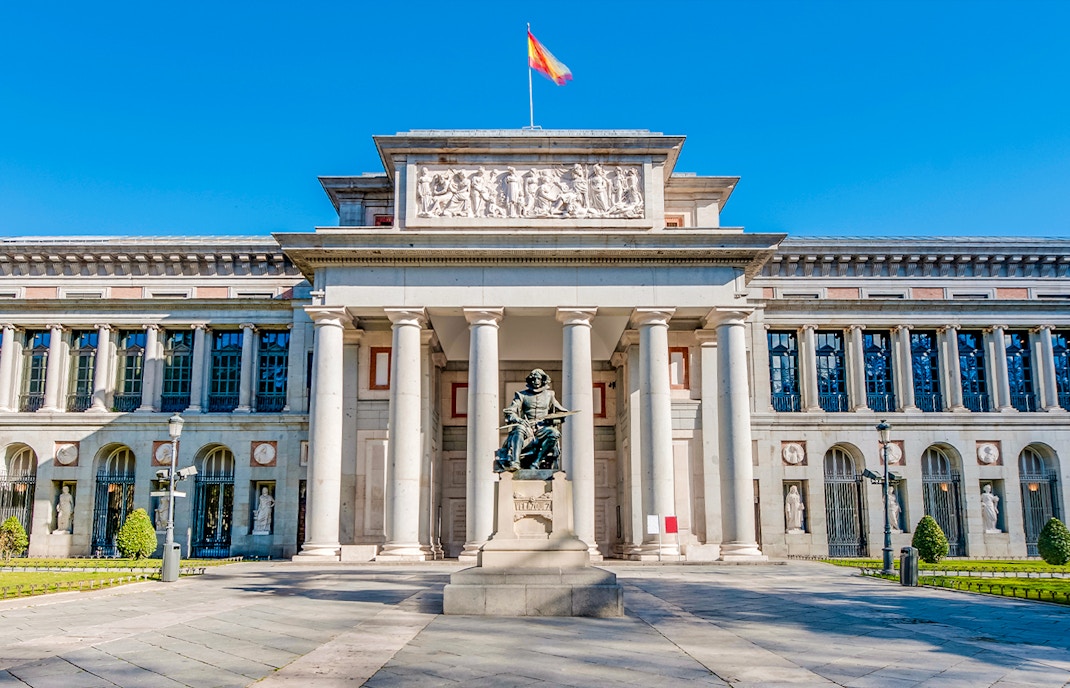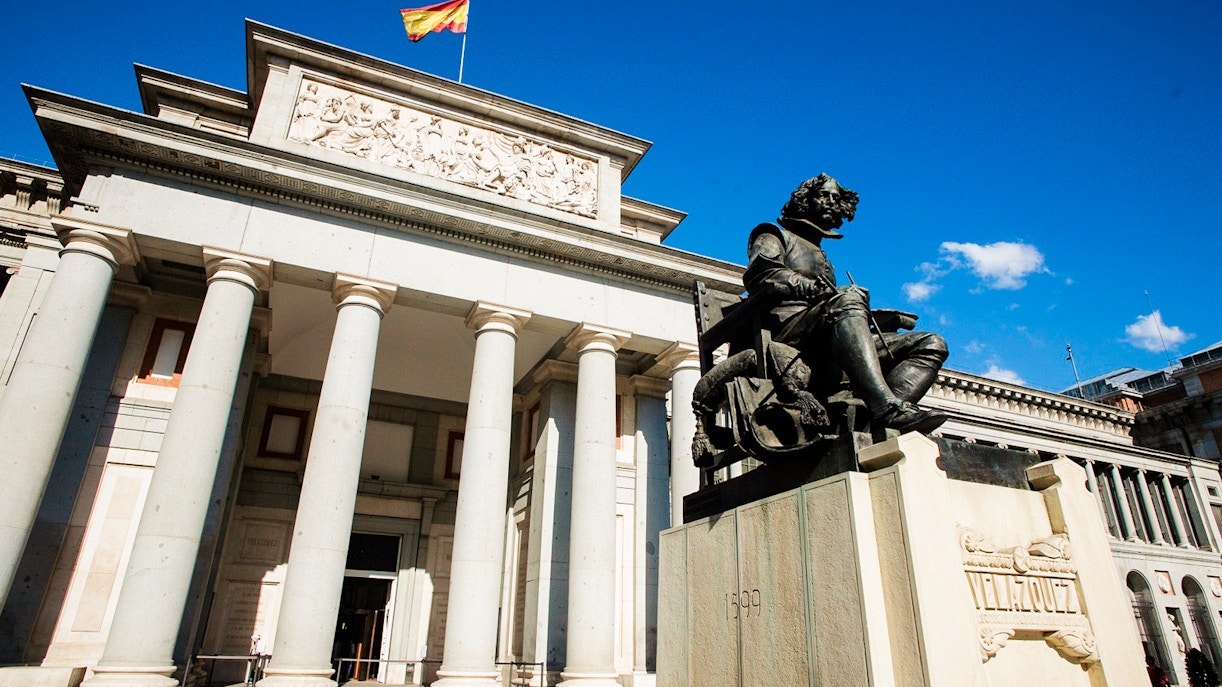- Royal Palace Of Madrid
- Madrid Flamenco Show Tickets
- Parque Warner Madrid
- Santiago Bernabeu Tours
- Madrid To Toledo Tours
- Reina Sofia Museum
- Thyssen-Bornemisza Museum
- Parque De Atracciones Madrid
- Liria Palace
- Wax Museum Madrid
- Cívitas Metropolitano Stadium Tours
- Museum of Illusions Madrid
- El Escorial Madrid
- Royal Palace Of Aranjuez
- Royal Palace of La Granja of San Ildefonso
- Atlantis Aquarium Madrid
- Ikono
A detailed history of Prado Museum | Timeline, major events & more
Book Your Prado Museum Tickets
Prado Museum history explained

The museum took shape
18th century
Prado Museum was designed by Spanish architect Juan de Villanueva in 1785. His rise led to his selection for the museum’s construction: the Spaniard became a popular name in the 1780s. He was appointed honorary director of Architecture of the Academy, Mayor architect of Madrid, Master Mayor of the Royal Sites, and Director of Palace works in 1797.

Open to Public
1819
King Charles III’s grandson, King Ferdinand VII, converted the museum from a place for historical artefacts to the Royal Museum of Paintings and Sculptures. He made the decision after encouragement from his wife, Queen Maria Isabel de Braganza, leading to the museum’s opening to the public in 1819. Visitors could admire the world’s largest collection of Spanish paintings for the first time ever and seek inspiration from Bosch, Titian, Rubens, and other artists, who dedicated their lives to decoding life and its struggles and meaning.

New paintings added
19th century
Since its opening, Prado Museum has added new paintings to provide visitors with insight into different artists. The museum’s royal collection increased significantly in the 16th century during the time of Charles V, thriving further under the succeeding Habsburg and Bourbon Monarchs. The Garden of Earthly Delights by Bosch, The Nobleman with his hand on his Chest by El Greco, and Death of the Virgin by Mantegna are a few royal paintings part of the museum’s original collection. The 19th century saw paintings coming from the former Museo de Arte Moderno, including works by Madrazo, Vicente López, Carlos de Haes, Rosales and Sorolla.

Addition and expansion
Late-20th century and 21st century
Prado Museum’s reputation increased in the 20th century, with new works added to the collection regularly. Paintings by El Greco, Fable, The Flight to Egypt, and The Countess of Chinchón by Goya are a few paintings added to the collection in the 20th and 21st centuries. The Villanueva building underwent an expansion to accommodate the new works, but soon it couldn’t. Prado Museum’s authorities started constructing a new building located on the same site and interconnecting the two buildings from within. The project took six years and coincided with the museum’s modernization efforts.
Prado Museum today

Prado Museum is an iconic symbol of Spain's cultural heritage and Europe’s history with artists. With a past spanning over two centuries, the museum continues to captivate visitors, drawing them into a world of history and creativity.
The Prado houses an impressive collection of European masterpieces, showcasing the works of Velázquez, Goya, Rembrandt, and Bosch. The diverse paintings, sculptures, and decorative arts offer a profound insight into the evolution of European art over the centuries.
Frequently asked questions about the Prado Museum's history
Prado Museum is one of Madrid’s most significant museums. It houses valuable works by Spanish and European artists and royal collections with over 1000 paintings.
The Prado Museum is over two centuries old.
The Prado Museum was constructed in 1785, but it isn’t clear how long it took to build the museum.
The Prado Museum was opened by King Charles III to house the Natural History Cabinet.
Spanish architect Juan de Villanueva designed the Prado Museum in 1785.
The Prado Museum has a neoclassical architectural style.
The Prado Museum wasn’t affected by any major events or incidents in history.
Changes were made to Prado Museum’s legal and statutory framework, allowing it to self-finance and gain autonomy. The museum's status was made effective by the Museo Nacional del Prado Act, in November 2003, and a subsequent amending Statute approved by Royal Decree in 2004.
Yes. Prado Museum guided tours are available.
